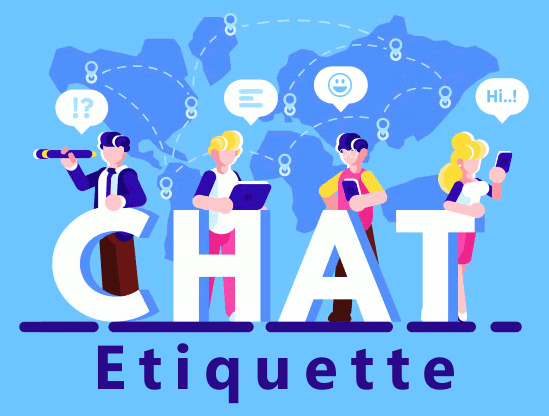“Communication works for those who work at it” – JohnPowell
Chat Etiquette in the workplace is very important because it creates a professional, mutually respectful environment that helps everyone in the office to communicate effectively and increase the organization’s productivity.

Every employee of the organization must make sure that he/she communicates professionally and follows the social norms of the company. The culture of the organization often stretches out to communication etiquette rules in the business.
Companies having a formal culture and values will expect the communication also to be formal even in the case of colleagues or teammates. This means that in such an organization, you will be expected to follow certain chat etiquettes which play a major role in communication.
Use Instant messenger tools productively to do your best work at your workplace by following the below chat etiquette rules.
1. Acknowledge the status message
Have a look at the recipient’s status/availability before you start instant messaging. Send your message only when they are available. This is the basic chat etiquette that one must follow in the workplace. If you find their status to be “Busy” or “Do not disturb”, remember that they could be in meetings or discussion. Avoid interrupting others without knowing their availability.
2. Always start with a greet or seek permission
Start Instant messaging with a greet like “Hi” or “Hello”. Also, be mindful of the good time to initiate the conversation by asking whether they would have a minute to help/answer you. Your message may be like “Steve, would you take a minute to approve the new employee’s IM user account?”. If the receiver can’t help you at that moment, you can ask him the right time to chat.
3. Keep the conversations short
Stay focused on the topic by having a brief and clear conversation. Make your conversation productive by holding on to the subject of the conversation alone. If the recipient may take some time to respond to you, then you can choose the other medium of communication such as email, voice call, video call, or face to face meeting. Nowadays many IM’s have all the essential features like Internal Mail, Voice Call, Video Call and so on…
4. Abbreviate only when needed
Reduce the usage of abbreviations, acronyms, and slangs. Understand the recipient’s preferred way of communication. You must have to always adjust the type of communication when you chat with colleagues, higher officials or friends. Try to be clear with your words. Also, it is important to check the grammar before you send the message.

5. Be Appropriate
Emojis can be used to express your feelings. But it is not etiquette to use more emojis in a conversation. Avoid the usage of emojis as much as possible. Also, the usage of the exclamatory mark and a question mark will weaken your messages. Use it moderately only when essential. Using capital letters indicates that you are shouting out the messages. Always be appropriate in professional communication.
6. Be Friendly & Polite
Being Professional or formal doesn’t mean that you must be rude to other teammates.
Say “Thank You”, “Please” to your colleagues. Chat in a polite way. Be a role model for others by following the professional chat etiquettes. Pay respect to the sender’s chat by sending a short message such as “yes”, “Looking for it”, “Checking now”, etc. Avoid pointing out the typing errors of your sender or friends.
7. Remember your chats are not Private
IM’s are used in organizations to boost up productivity. Such messengers are not meant for the employees to have personal chats. Be aware that they are not Private. Every message that you send or receive can be stored on a Server. Never write anything that would affect you and other employees.
8. Properly end conversations
When a conversation ends, it is an etiquette to send a “Thank you” message. It will bring you a better relationship with the other teammates.